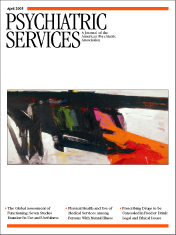The time that you waste on the rose is what makes the rose so important." This beautiful phrase from
The Little Prince (
1) was the first association I made when I read
The Edison Gene: ADHD and the Gift of the Hunter Child, by well-known author Thom Hartmann. Hartmann's dedication to promoting a controversial view of attention-deficit hyperactivity disorder (ADHD) has been so consistent that he deserves respect, including from those like me who have conceptual differences with his understanding of that psychiatric disorder. Our disagreements start with the statement "Psychiatrists believe ADHD is a disease, Thom Hartmann perceives it as a gift."
When I think of the suffering that individuals with ADHD experience, I have a problem with that theory. Nevertheless, Hartmann's book is a treat to the intellect. It comes as a sequel to his previous work, Attention Deficit Disorder: A Different Perception, and his bestseller Complete Guide to ADHD. All three books are based on the premise of removing the pathology label from the most common psychiatric diagnosis among American children. The author's theory is that ADHD was once an adaptive psychological tool that facilitated survival in the Stone Age—a provocative concept but unfortunately without merit, because those "hypervigilant hunters" didn't qualify for a diagnosis of ADHD.
For that reason, my disagreements with Hartmann's ideas, as presented in The Edison Gene, start from the very beginning. He attributes qualities such as seeking out sensation and risk that I don't see as traits of the individual with ADHD. For example, in the book's introduction, titled "A New View for Our Children," Hartmann relates his discovery of how some Hindu people perceive what he considers to be ADHD cases: individuals "who seem to crave stimulation, yet have a hard time staying with any one focus for a period of time. They may hop from career to career and sometimes even from relationship to relationship, never seeming to settle into one job or into a life with one person—but the whole time they remain incredibly creative and inventive."
Some clinicians, even if they have not read Kay Jamison's
Touched With Fire (
2) or Joseph Schildkraut's article on abstract expressionist artists (
3), will identify the above-described individual as one who may have bipolar disorder. In fact, Hartmann seems to be describing himself with that profile, if we consider that he is, besides a psychotherapist, a neurolinguistic programmer, a journalist, a private detective, a pilot, a skydiver, an acupuncturist, a radio broadcaster, an electronic technician, and a broadcasting engineer. He also has been married for more than 30 years.
As for Hartmann's notion that the sole chemical abnormality in ADHD involves an imbalance in the neurotransmitter dopamine, I accept dopamine's important role in regulating attention, pleasure, and movements. However, I also concur with investigators who attribute a significant role to norepinephrine's filtering out of irrelevant information at the prefrontal cortex level.
Despite conceptual differences with the author, I see The Edison Gene as a captivating and informative book that will be enjoyed more if the reader keeps in mind that when Hartmann is talking about ADHD, he may actually be describing hypomania. For those who believe that ADHD can be treated without medication, this book could be akin to another New Testament, but I will remind them that Parkinson's disease is also a "dopamine illness," and nobody is expecting that Janet Reno will stop shaking without medications.

